IAC Newsletter

Keep Up with the Latest News from IAC and Emerging DEI Issues
A quarterly e-newsletter for practitioners and organizations designed to advance essential dialogues on Diversity, Equity & Inclusion (DEI)
Welcome to the IAC Newsletter
We are a coalition of organizations and practitioners committed to diversity, equity and inclusion within our organizations and society. We provide resources, advocacy, and webinars for dialogues across differences to promote inclusion. We serve as allies for those who feel marginalized and advocates for inclusive policies and practices. We are committed to our vision of being the leading voice for the DEI profession globally.
We look forward to hearing from you with thoughts on this issue and what you would like to see in future editions.
Q4, 2022 Newsletter: Roe v. Wade
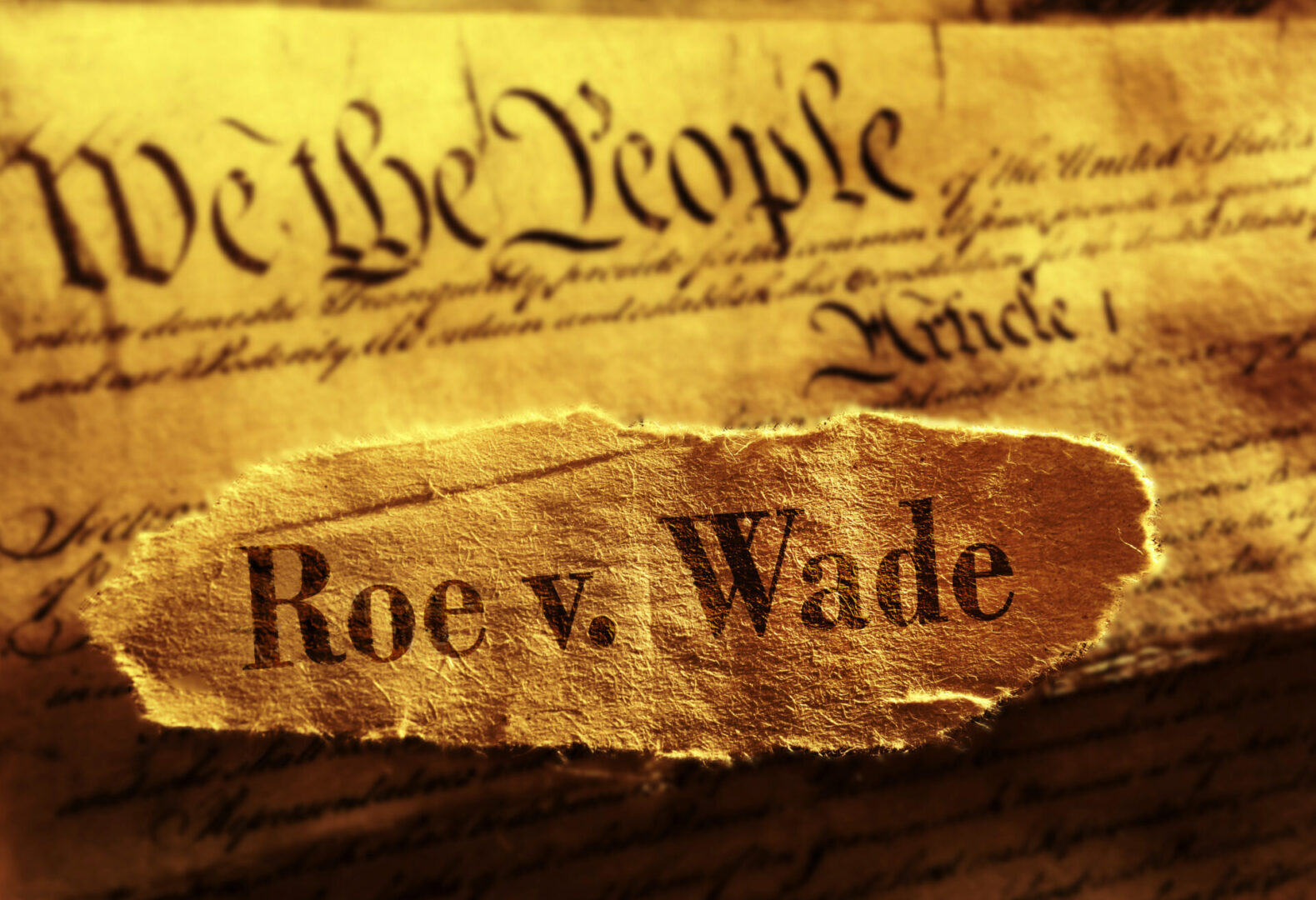
Roe V Wade newspaper headline on the United States Constitution
This issue contains highlights of important DEI issues and a special guide on engaging in conversations on Roe v. Wade.
Diversity, Equity and Inclusion
Global News – Curated for IAC
Why South Africa’s Treasury is Baulking at Paying Income Grants
DeSantis Claims Win in Campaign Against E.S.G.
What’s Keeping Women From Management Roles?
What Really Happens When Workers Are Given a Flexible Hybrid Schedule?
In Trust: This podcast describes the system that moved wealth from Native hands to White ones for the Osage Nation.
What the Same-Sex Marriage Bill in Congress Would and Wouldn’t Do
UN Women Group Ends Partnership With BlackRock After Criticism
How medicine erased Black women from a ‘white man’s disease’
Roe v. Wade: What is it and what are the implications for DEI Practitioners?
The strictest abortion law in the U.S. took effect on Sept. 1, 2021 in Texas. It set the stage as an end-run around Roe v. Wade -- the 1973 Supreme Court decision that legalized abortion nationwide -- and served as a blueprint for other states to make policy by encouraging neighbors to sue each other.
Importantly, beyond a women’s rights issue which is clearly important, overturning Roe v. Wade disproportionately impacts women of color, as they are more likely to obtain abortions, have more limited access to health care, and face underlying inequities that would make it more difficult to travel out of state for an abortion compared to their White counterparts. In addition, other individuals also have abortions, including some transgender men, nonbinary, and gender-nonconforming persons making the overturn of Roe v. Wade an issue of intersectionality, impacting women across a spectrum of differences.
STEP 1: What is the ruling of Roe v. Wade and what does it mean?
In June, 2022, U.S. Supreme Court officially reversed Roe v. Wade, declaring that the constitutional right to abortion, upheld for nearly a half century, no longer exists. The decision means that abortion rights will be rolled back in nearly half of the states immediately, with more restrictions likely to follow. For all practical purposes, abortion will not be available in large swaths of the country.
“The Court’s opinion delivers a wrecking ball to the constitutional right to abortion, destroying the protections of Roe v. Wade, and utterly disregarding the one in four women in America who make the decision to end a pregnancy”.
Nancy Northup, President and CEO of the Center for Reproductive Rights
Abortion is now banned in these states. See where laws have changed.
Access to abortion in roughly half the country has changed swiftly after the Supreme Court overturned Roe v. Wade. Providers, patients, lawyers and state officials are scrambling to interpret a cascade of confusing and often conflicting antiabortion legislation, some of it written a century ago.
Most abortions are now banned in at least 12 states as laws restricting the procedure take effect following the Supreme Court’s decision to overturn Roe v. Wade. An additional two states now ban abortion at about six weeks of pregnancy, before some women know they are pregnant. In many states the fight over abortion access is still taking place in courtrooms, where advocates have sued to block enforcement of laws that restrict the procedure.
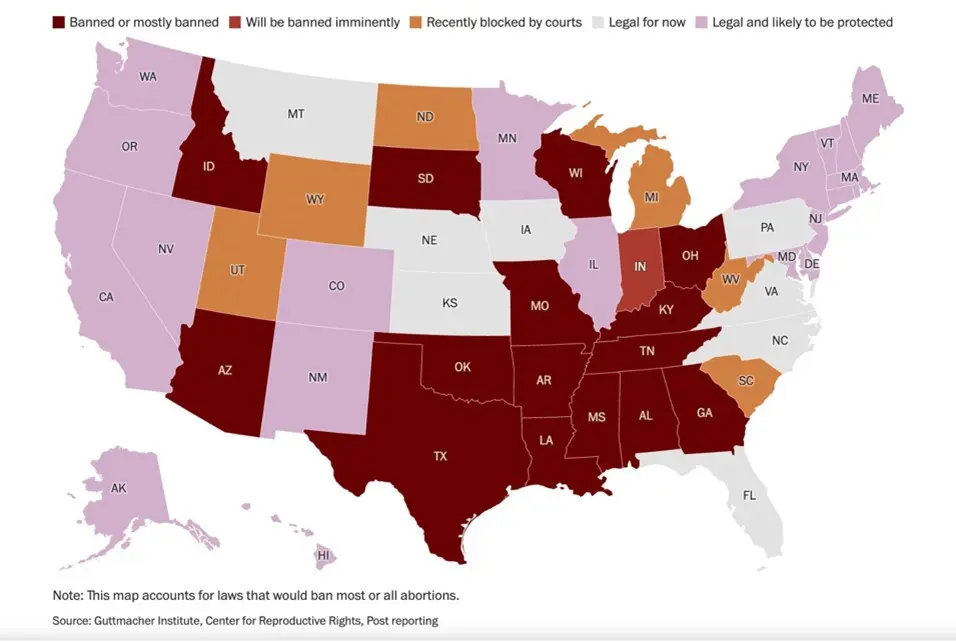
STEP 2: Understanding the Impact of the Overturn of Roe v. Wade on Diversity, Equity and Inclusion
Impact for Women of Color
Women of color have much at stake in the June 2022 Supreme Court ruling in the case Dobbs v. Jackson Women’s Health Organization. The decision overturned the longstanding Constitutional right to abortion and eliminated federal standards on abortion access that had been established by earlier decisions in the cases, Roe v. Wade and Planned Parenthood v. Casey. Going forward, it will be up to each state to establish laws protecting or restricting abortion in the absence of a federal standard.
More than half of abortions are among women of color based on available data. In 2019, almost four in ten of abortions were among Black women (38%), one-third were among White women (33%), one in five among Hispanic women (21%), and 7% among women of other racial and ethnic groups (Figure 1). The abortion rate was highest among Black women (23.8 per 1,000 women), compared to 11.7 among Hispanic women, and 6.6 among White women (Figure 1).
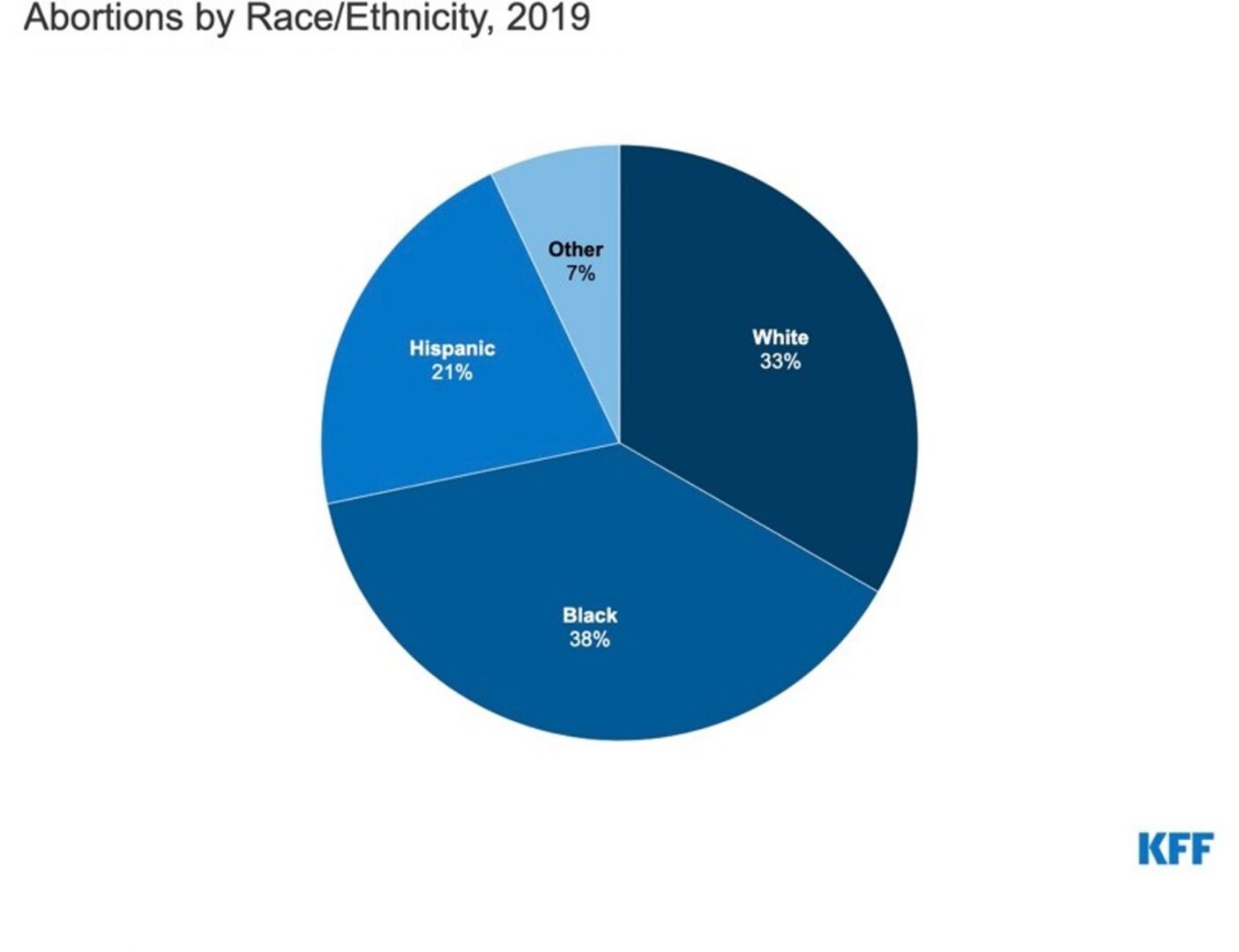
Over four in ten (43%) of women between ages 18-49 living in states where abortion has become or will likely become illegal are women of color. As of May 2022, 17 states had laws in place intended to immediately ban abortion, including four that had a law banning abortion in place predating Roe v. Wade. Overall, 18.1 million or 28% of women ages 18-49 live in these 17 states. Among women ages 18-49 living in these states, 22% are Hispanic,14% are Black, and 4% are Asian (Figure 4). (See Appendix Table 1 for the racial/ethnic distribution of women ages 18-49 by state.) Overall, nearly half (49%) of all AIAN women ages 18-49 live in these states, as do nearly three in ten White (29%), Hispanic (28%), and Black (28%) women in this age group, while less than one in five NHOPI (19%) and Asian (15%) women live in these states.
There are a variety of potential reasons why abortion rates are higher among some women of color. Overall, Black, Hispanic, American Indian and Alaska Native (AIAN), and Native Hawaiian and Other Pacific Islander (NHOPI) women have more limited access to health care, which affects women’s access to contraception and other sexual health services that are important for pregnancy planning.
Lower Use of Contraceptives among Women of Color
- Datashow that, overall, current contraception use is higher among White women (69%) compared to Black (61%) and Hispanic (61%) women. Some women of color live in areas with more limited access to comprehensive contraceptive options.
Mistrust of the Health Care System
- In addition, the health care system has a long history of biased practices targeting the
sexual and reproductive health of people of color, including forced sterilization, medical experimentation, the systematic reduction of midwifery.
Discrimination Experienced by Providers
- Many women of color also report discriminationby individual providers, with reports of dismissive treatment, assumption of stereotypes, and inattention to conditions that take a disproportionate toll on women of color, such as fibroids. These factors have contributed to medical mistrust, which some women cite as a reason that they may not access contraception.
Inequities Across Social Determinants of Health
- In addition, inequities across broader social and economic factors — such as income, housing, and safety and education — that drive health, often referred to as social determinants of health, also affect decisions related to family planning and reproductive health.
STEP 3: Setting the Stage for a Meaningful Conversation
The Supreme Court’s decision in the case of Dobbs v. Jackson Women’s Health Organization left many employees shaken and distressed. Ensuring that employees feel they can authentically share and express their fears and concerns over the decision is key to fostering a culture of inclusion and psychological safety at companies.
Seramount, a strategic alliance partner of the Inclusion Allies Coalition, has produced an excellent resource on navigating difficult conversations on Roe v. Wade. Here are some steps and resources from this organization that leaders can use to redirect the conversation to the importance of understanding Roe v. Wade in the workplace:
DEI Communications Strategy Tips and Considerations
Organizations can no longer rely solely on employee engagement surveys to get a pulse on employee culture. Current and former employees are sharing their negative and positive workplace experiences on platforms like Glassdoor, LinkedIn and InHerSight, which makes it more important to regularly share impactful positive stories both internally and externally.
Senior leaders will have to make decisions regarding creating internal ongoing conversations to identify and address negative concerns received either internally or externally before they go public. Inclusive and strategic leadership will become the new standard for other leading companies to follow. Here are three things to consider when preparing DEI communications:
- Remain neutral: Keep messaging centered on education and clarity rather than approving or disapproving of Roe v. Wade integration into social Do this by framing conversations around learning opportunities.
- Create safe and brave spaces: Create an encouraging environment for people to discuss their, concerns, hopes, and fears about Roe v. Wade in the Allow all voices to be heard, but be sure to keep it friendly by not allowing anyone to say anything derogatory.
- Cite the business case: If applicable, use language found in company policy—be it pro-women’s rights statement, goals, or a portion of the employee handbook. If it discusses equality, accepting one another because of differences, or the importance of learning from different cultures it is beneficial to tie a conversation to the business plan for the company to demonstrate
- Define the issue: Be clear about what is happening in society that could be impacting employees. Give examples of leadership hopes or concerns on the issue women’s rights. Explain why the conversation is important and what leadership hopes to accomplish from holding open conversations.
Resources for Ongoing Discovery and Discussion
Full text of Roe v. Wade (1973)
The World’s Abortion Laws: https://reproductiverights.org/maps/worlds-abortion-laws/
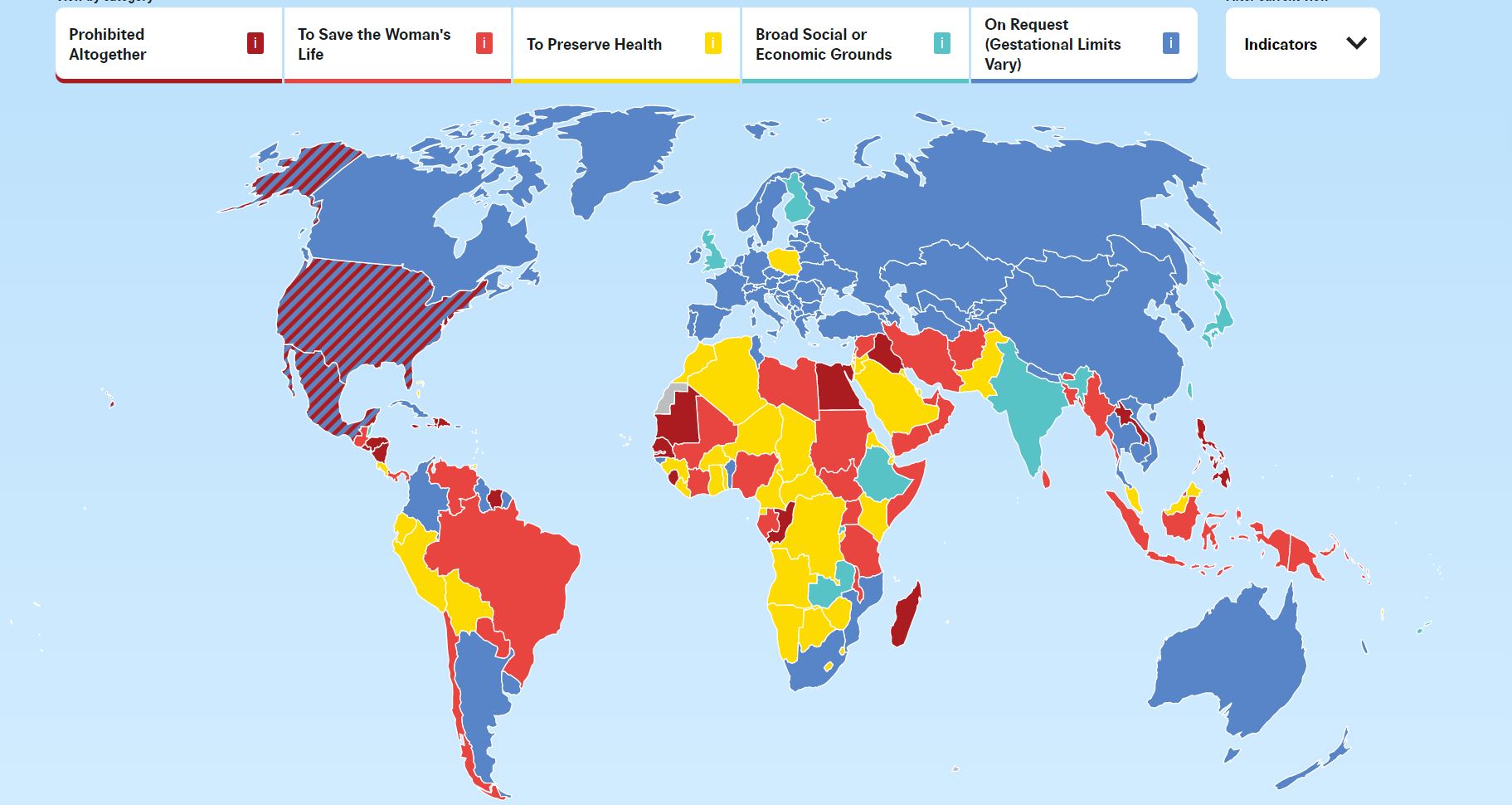
The Center for Reproductive Rights tracks the most recent developments in abortion law and policy.
- NSW joins the rest of Australian states in decriminalizing abortion, permitting abortion on request up to 22 weeks.
- Oaxaca becomes the second state in Mexico to decriminalize abortion.
- UK parliament votes overwhelmingly to adopt legislative provisions extending abortion rights to Northern Ireland and to legalize same-sex marriage
- Kenya’s High Court rules the withdrawal of 2012 standards and guidelines on Reducing Maternal Mortality and Morbidity from Unsafe Abortion in Kenya illegal, holding abortion lawful on both physical and mental health grounds
- Iceland to have one of Europe’s most liberal abortion laws, permitting abortion on request up to 22 weeks.
- North Macedonia removes regressive barriers to abortion and extends the gestational limit to abortion on request to 12 weeks, making abortion care more accessible to women in North Macedonia.
- South Korea’s Constitutional Court holds laws restrictive abortion law unconstitutional, giving lawmakers until 2020 to pass new legislation legalizing abortion.
Heritage Celebrations: October – December 2022
Hispanic Heritage Month is observed from September 15 to October 15. This month corresponds with Mexican Independence Day, which is celebrated on September 16, and recognizes the revolution in 1810 that ended Spanish dictatorship.
National Disability Employment Awareness Month. This observance was launched in 1945 when Congress declared the first week in October as “National Employ the Physically Handicapped Week.” In 1998, the week was extended to a month and renamed. The annual event draws attention to employment barriers that still need to be addressed.
LGBTQ+ History Month, a US observance started in 1994 to recognize lesbian, gay, bisexual, transgender, and queer history and the history of the gay rights movement.
Global Diversity Awareness Month, a month to celebrate and increase awareness about the diversity of cultures and ethnicities and the positive impact diversity can have on society.
Black History Month in the United Kingdom, Ireland, and The Netherlands. People from African and Caribbean backgrounds have been a fundamental part of British history for centuries. Black History Month gives everyone the opportunity to share, celebrate and understand the impact of black heritage and culture.
National Native American Heritage Month, which celebrates the history and contributions of Native Americans.
National Family Caregivers Month honors the more than forty million caregivers across the country who support aging parents, ill spouses, or other loved ones with disabilities who remain at home.
Hanukkah, commemorates the rededication during the second century B.C. of the Second Temple in Jerusalem, where according to legend Jews had risen up against their Greek-Syrian oppressors in the Maccabean Revolt.
International Day of Persons with Disabilities, designed to raise awareness in regard to persons with disabilities in order to improve their lives and provide them with equal opportunity.
Q3, 2022 Newsletter: Critical Race Theory
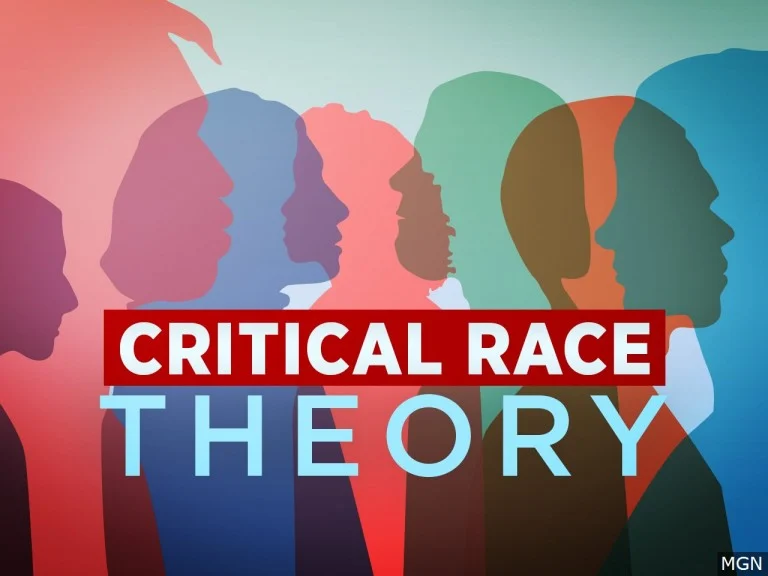
This issue contains highlights of important DEI issues and a special guide on engaging in conversations on Critical Race Theory.
We look forward to hearing from you with thoughts on this issue and what you would like to see in future editions.
Diversity, Equity and Inclusion Global News – Handpicked for IAC Members
Report: Local Governments Are Embracing Workplace Diversity, Equitable Hiring Practices – American City & County
Inclusion at The Workplace Still a Distant Dream for the LGBTQIA+ – The New Indian Express
The Metaverse's Effect on Workplace Inclusion – Fast Company
Netherlands Looks Set to Make Working from Home a Legal Right for Employees
Ableist Attitudes: What They Are and Their Impact in The Workplace
We’re Not Going Back to A Time Before Roe. We’re Going Somewhere Worse. Via The New Yorker
Critical Race Theory: Dispelling Myths for DEI Practitioners
This guide was designed to build awareness of Critical Race Theory (CRT), to dispel myths promulgated by opponents, and to empower DEI practitioners with tools to navigate discussions with clients and colleagues.
STEP 1:
Understanding the Background and Meaning of Critical Race Theory
“If you don't have a lens that's been trained to look at how various forms of discrimination come together, you're unlikely to develop a set of policies that will be as inclusive as they need to be.”
Kimberlé Williams Crenshaw,
civil rights advocate, scholarWatch this video to learn what CRT is and is not.
Where did the term Critical Race Theory originate? What does it mean?
Kimberlé Williams Crenshaw is credited with developing the term Critical Race Theory. In 1989, she—alongside four thought-leaders, two White allies, and three organizers—introduced the term. “We were critically engaging law but with a focus on race,” she says. “We wanted critical to be in it, race to be in it. And we put theory in to signify that we weren’t just looking at civil rights practice. It was how to think, how to see, how to read, how to grapple with how law has created and sustained race—our particular kind of race and racism—in American society.”
Conservatives have long embraced the idea that America is a color-blind, equitable society where hard work defines who succeeds. CRT is based on the premise that race is socially constructed, yet it is real through social constructions. It says the idea of a Black person is a legal concept. “Our enslavability was a marker of our degradation,” Crenshaw explains. “And our degradation was a marker of the fact that we could never be part of this country. Our Supreme Court said this”—in the Dred Scott v. Sandford ruling of 1857.
Critical race theory pays attention to the ripple effects of such decisions. It asks us to scrutinize how and why society looks the way it does. “These are the kinds of questions the other side doesn’t want us to ask because it wants us to be happy with the contemporary distribution of opportunity,” Crenshaw says.
Race and Racism: Social Construct or Biological Difference Only
The American Bar Association provides guidance on how to explain that race and racism are a social construct rather than an innate biological one. They note that Kimberlé Williams Crenshaw uses the term CRT as a verb, rather than a noun, as it is a fluid concept that is always evolving– this ever-changing mantra of the theory allows it to mold to social movements and theories more readily, changing as society changes. CRT recognizes that racism and race are intersectional ideas with other identities, inclusing gender, sexuality, religion and wealth.

Following are three examples of how racial inequities impact the African-American experience in wealth distribution, the judicial system, healthcare, and education.
- In this first video (pictured above), Racial Wealth Gap Explained, Cory Booker, U.S. Senator, and others describe how slavery, centuries of housing discrimination, and inequality have compounded to form a racial wealth gap in the United States.
- A second video, The Enduring Myth of Black Criminality, narrated by Ta-Nehisi Coates, examines stereotypes of Black criminality on their impact on mass incarceration—an institution where 32% Black men are incarcerated vs. only 6% of White men.
- The third video, NowThis News, Dr. Fauci on Health Disparities in Coronavirus Cases for AfricanAmericans (2020) describes how disparities in access to medical care and national policy have exacerbated the impact of Covid-19 among African Americans.
- Segregated schooling is a particularly profound and timely demonstration of the persistence of systemic racism in education.
Critical Race Theory is built on the following key principles:
- Race is not biologically real but is socially constructed and socially significant. It is the product of social thought and is not connected to biological reality.
- Racism is a normal feature of society and is embedded within systems and institutions, like the legal system, that replicate racial inequality. This dismisses the idea that racist incidents are aberrations but instead are manifestations of structural and systemic racism.
- Racism is codified in law, embedded in structures, and woven into public policy. CRT rejects claims of meritocracy or “colorblindness.” CRT recognizes that it is the systemic nature of racism that bears primary responsibility for reproducing racial inequality.
- CRT rejects deficit-informed research that excludes the epistemologies and lived experiences of people of color.
It is important to note that while Critical Race Theory was constructed through the lens of the African-American experience, it transcends ethnicity, gender, gender expression, disability, and other dimensions of diversity. It also expands beyond the U.S. experience to countries around the world. Systemic inequities take shape differently in diverse structural and ideological forms across all geographies.
STEP 2: Recognize the Issue at the Center of Controversy
The Conflict behind Critical Race Theory and Impact on Diversity, Equity and Inclusion
“In a true democracy, there has to be a line between deliberate debate and mob rule. Trump has crossed the line and much of the media has exacerbated the problem by treating his remarks as entertainment, effectively encouraging his competition to do the same.”
Kimberlé Williams Crenshaw
Christopher Rufo, a Conservative activist and senior fellow at the Manhattan Institute, was among the first to openly challenge CRT. Saying he’d spent months researching how the theory had infiltrated American systems, Rufo called on then President Donald Trump to act. Trump ordered federally funded agencies to stop teaching critical race theory and White privilege because the concepts lead people to believe— incorrectly, he said—that America is inherently racist. With months left in his presidency, Trump launched the 1776 commission—a rebuttal of “warped” and “distorted” social justice teaching concepts like the New York Times magazine’s 1619 Project, spearheaded by journalist Nikole Hannah-Jones, which aims to re-examine America’s history through the lens of slavery.
Trump’s order banned certain types of diversity training in federal agencies. Under the order, which has since been revoked by President Joe Biden, these trainings couldn’t promote certain ideas—for example, members of one race or gender may consider themselves inherently superior, that all people have unconscious bias, or that the United States is a fundamentally racist or sexist country.
President Joe Biden rescinded both the ban and commission on his first day in office. Following Biden’s reversals, many Republicans pushed bills to outlaw Crenshaw’s academic framework in schools. In April, Idaho became the first state to pass such a bill; Governor Brad Little said it would prevent teachers from indoctrinating students to hate America. A month later, Oklahoma governor Kevin Stitt followed suit. Since then, several more Republican states have introduced similar measures.
States where Anti CRT Bills Have Been Passed or Are Being Reviewed

STEP 3: Setting the Stage for a Meaningful Conversation
Seramount, a strategic alliance partner of the Inclusion Allies Coalition, has produced an excellent resource on navigating difficult conversations on Critical Race Theory. Here are some steps and resources from Seramount that leaders can use to redirect the conversation to the importance of understanding CRT in the workplace:
- Remain neutral: Keep messaging centered on education and clarity rather than approving or disapproving of CRT’s integration into social structures. Do this by framing conversations around learning opportunities.
- Create safe and brave spaces: Create an encouraging environment for people to discuss their joys, concerns, hopes, and fears about CRT in schools and in the workspace. Allow all voices to be heard, but be sure to keep it friendly by not allowing anyone to say anything derogatory.
- Cite the business case: If applicable, use language found in company policy—be it an anti-racism statement, goals, or a portion of the employee handbook. If it discusses equality, accepting one another because of differences, or the importance of learning from different cultures it is beneficial to tie a CRT conversation to the business plan for the company to demonstrate relevance.
- Define the issue: Be clear about what is happening in society that could be impacting employees. Give examples of leadership hopes or concerns on the issue of CRT. Explain why the conversation is important and what leadership hopes to accomplish from holding open conversations on CRT.
Conversation Starters
The videos shared earlier in this Inclusion Allies Coalition CRT guide, Racial Wealth Gap Explained, The Enduring Myth of Black Criminality, and NowThis News, Dr. Fauci on Health Disparities in Coronavirus Cases for African Americans (2020) are excellent resources which can be used to start a conversation about CRT.
The Inclusion Allies Coalition also hosted a webinar on CRT, Critical Race Theory: What It Is, What It Is Not and What It Is Becoming https://bit.ly/IAC-CRT with panelists Professor Michael Butler, Kenan Distinguished Professor of History, Flagler College, Cindy-Ann Thomas, Principal, Littler, DE&I Consultant & Facilitator, Employment Attorney, and Valoria Armstrong, Chief Inclusion Officer and VP, External Affairs, American Water. This webinar discusses how the CRT conversation has moved to schools that acknowledge historical racism, to libraries that share "inappropriate" books and to DEI training that may make white people feel "uncomfortable." This webinar addresses the confusion and inaccuracy this topic is creating in companies, agencies, and other organizations.
In the introduction to this webinar, IAC also noted that our members should be aware that an anti-critical race theory (CRT) group is providing parents with tools to track equity consultants, warning that families face a formidable and well-funded opponent in the “Woke Industrial Complex.” (AKA Diversity Industrial Complex). The "Consultant Report Card" details findings from thousands of pages of public record requests that were reviewed by Parents Defending Education (PDE). They provide a searchable database and claim they have uncovered
$19,575,169.45 worth of contracts with 249 documented in 29 states –and 122 consultants, calling this, just a
“drop in the bucket.”
During conversations with clients, colleagues, and other DEI practitioners, it is important to remember, this is not a session where you are trying to solve problems. Your goals are to listen, share and understand. Here are some potential questions to use to engage in this conversation following a check-in with everyone present:
- How are you experiencing what’s happening in relation to Critical Race Theory?
- What does the term mean to you?
- What are you confused about (uncomfortable about, possibly scared about)?
- What are some of the implications of this topic (to how we work together, how we support our teams, how we collaborate with others and how we do our DEI work?)
- How can we support each other going forward?
This is not a one-and-done conversation. We encourage you to have regular check-ins with clients, colleagues, and other DEI practitioners to share insights, best practices for addressing systemic inequities and continued challenges along the way. Please also share your comments and experiences with us at [email protected]
Resources for Ongoing Discovery and Discussion
Books
· Critical Race Theory by Khiara M. Bridges
Publication Date: 2018
This book discusses the development and application of critical race theory (CRT) in the legal context. “Part I provides a history of CRT... Part II introduces and explores...institutional/structural racism, implicit bias, microaggressions, racial privilege, the relationship between race and class, and intersectionality. Part III builds on Part II...by exploring the intersection of race with a variety of other characteristics...Part IV analyzes...racial disparities in health, affirmative action, the criminal justice system, the welfare state, and education.”
Publication Date: 2019
This book compares the personal experiences of women of color professors with those of white women, white men, and other men of color who serve as faculty and administrators in American law schools. It analyzes how racial and gender biases have become pervasive in hiring, colleague interaction, promotion, and the legal education taught within law schools today.
Publication Date: 2006
Haney López’s book is the critical race cornerstone. It discusses how race is a social construct and analyzes the intersection of race and law. “Ten years later, Haney López revisits the legal construction of race, and argues that current race law has spawned a troubling racial ideology that perpetuates
inequality under a new guise: colorblind white dominance.”
Articles
- Rutgers Center for Security, Race and Rights, Race and Racism in Higher Education: Annotated Bibliography of Articles and Reports (2020). An annotated bibliography comprised of law review articles, social science articles, and policy reports on race and racism in higher education.
- Ta-Nehisi Coates, The Case for Reparations, The Atlantic (June 2014) (last visited July 21, 2020). This article highlights socioeconomic racial disparities throughout U.S. history.
“We the People” This article questions and discusses the phrase "We the People" from the U.S. Constitution. It argues "we" positions an "other" or "they," and that "[t]he 694,280 enslaved Africans accounted for in the 1790 census were the paradigmatic 'they' to the people’s 'we.' Blackness marked those who, though never intended to be included in 'we,' were useful as the 'they' against which 'we' gained its full meaning."
Databases
- The Race, Research & Policy Portal The web portal, hosted by The Harvard Kennedy School's Shorenstein Center on Media, Politics and Public Policy, provides searchable summaries of research on diversity, racial equity, and antiracist organizational change in a wide variety of settings.
- ABA Civil Rights and Social Justice COVID-19 Series The Section of Civil Rights and Social Justice has developed a multi-part webinar series exploring how the COVID-19 pandemic highlights critical legal issues of criminal justice, civil rights, human rights, and economic concerns, to name only a few. In these free webinars, panelists address the deepening crises in our collective pursuit of advancing law and justice.
- COVID-19: Advancing Rights and Justice During a Pandemic COVID-19 Columbia and Duke Law Virtual Event Series.
- Joint Center for Political and Economic Studies This is a difficult moment for the world and the United States, and for Black communities. The Joint Center is working closely with several other Black organizations to ensure that the challenges facing Black communities are considered and adequately addressed in COVID-19 policy decisions.
- Resource Center: 2019 Novel Coronavirus (COVID-19) Practice alerts and information relating to the practice of Immigration Law during the COVID-19 Pandemic.
- TransformHarm TransformHarm.org is a resource hub about ending violence. It offers an introduction to transformative justice.
In Case You Missed It: Other IAC Leadership Blogs
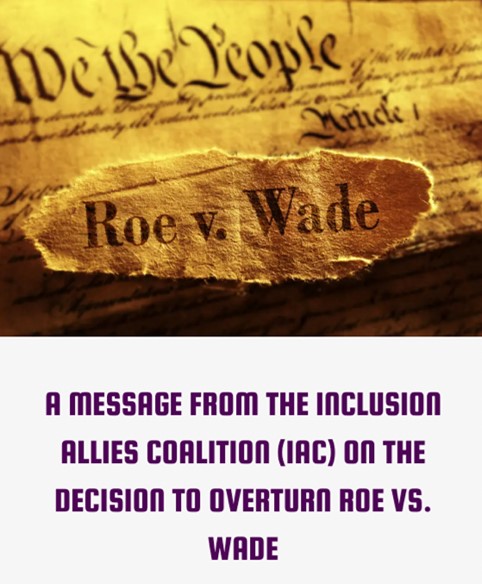
Read more here

ENJOY THE BENEFITS OF IAC MEMBERSHIP
Membership dues for organizations, individuals and students are now available and enable IAC members to take advantage of professional networking, mentoring services provided exclusively by the IAC, Dialogues across Differences webinars, and participation in Global IAC events.
SHARE YOUR SUCCESSES AND STORIES. We would love to hear your stories and celebrate your successes. Contact us at [email protected] or [email protected] to share your experiences for social media promotion.
